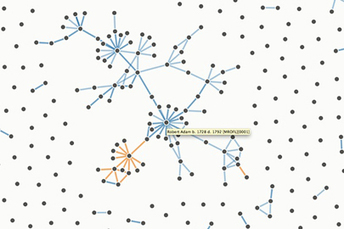Through a digital analysis of correspondence from elite tourists in Europe, classicist Giovanna Ceserani is discovering how international travel fostered cultural and academic trends.
Research and publish the best content.
Get Started for FREE
Sign up with Facebook Sign up with X
I don't have a Facebook or a X account
Already have an account: Login

 Your new post is loading... Your new post is loading...
 Your new post is loading... Your new post is loading...
|
|











Afinal ainda faltava mais esta... Bom fim-de-semana!
We live in a world of networks, of nonstop messaging and degrees of separation. So did intellectuals of the early modern age, according to new research at Stanford.
During the 18th century, thousands of letters, often on academic subjects like mathematics, were exchanged between scholars across Europe. Wealthy aristocrats and their tutors penned many of those letters when they were on the famed "Grand Tour" of ancient sites in Europe.
A pioneering digital visualization project has allowedGiovanna Ceserani, an associate professor of classics, to map the routes of thousands of British and Irish elite travelers who went to Italy in the heyday of the Grand Tour.
Ceserani's digital humanities project, the Grand Tour Travelers, has uncovered unexpectedly close connections between intellectuals, illuminated the rise and fall of cities, and occasionally offered warnings about how visualization can sometimes prove misleading.
Analysis of digital interpretations of the records of over 6,000 travelers from the British Isles illustrate just how small the elite world of tourists in this period was, as well as how, "irrespective of profession and social status, travel abroad seems to have lowered social boundaries and enabled otherwise unlikely connections,"
Ceserani said.
The project began with the encoding of a digitized version of the Dictionary of British and Irish Travelers to Italy, 1701-1800, generously supplied by the Paul Mellon Centre in London. For each traveler, Ceserani and her team recorded the sites they visited, the dates of their visits and their birthplace and year, as well as their area of expertise, educational background and social status, among other variables.
A scholar with an interest in how classical sites in Italy influenced broader European culture, Ceserani wanted to trace "the actual movements of scholars, of travelers," as they undertook journeys across Europe, often coming into contact with other travelers as they did so.
Digital humanities experts within the Mapping the Republic of Letters project, of which Ceserani is a core member, helped Ceserani build the platforms "to place these objects and events onto maps and graphs, visualizing in revealing ways our material."